Bread and golden beauty
Hello everyone! I hope you all are good. Today I'd like to share with you my visit to one of the most beautiful churches that the historical centre of Lima could have, located strategically in the jirón Ucayali (area of the city). The church of San Pedro can be identified by its yellow-coloured facade and it belonged to the Jesuit order during the colonial era.
The church of San Pedro is one of my favourite ones in the historical centre of Lima, since I've been tremendously in love with it since I first saw it.
My memories
Last May I took advantage of my trip there to go past this church and takes some pictures of it, which reminds me, together with the church of San Francisco, of my times as a Tourism student in San Marcos. In those years, Lima city centre was becoming my second home and I was more and more concerned about reading and learning the history of my city to share it with my friends and add it to my general knowledge.
The last time I entered the church of San Pedro in Lima I noticed that some parishioners were sitting around a table, so I could not make any noise in order not to disturb them. On the other hand, besides the Cathedral, this church is the most asked one by partners, since its decoration is one of the most beautiful ones of Lima downtown.
Attached here a picture of the mayor altar of San Pedro church:
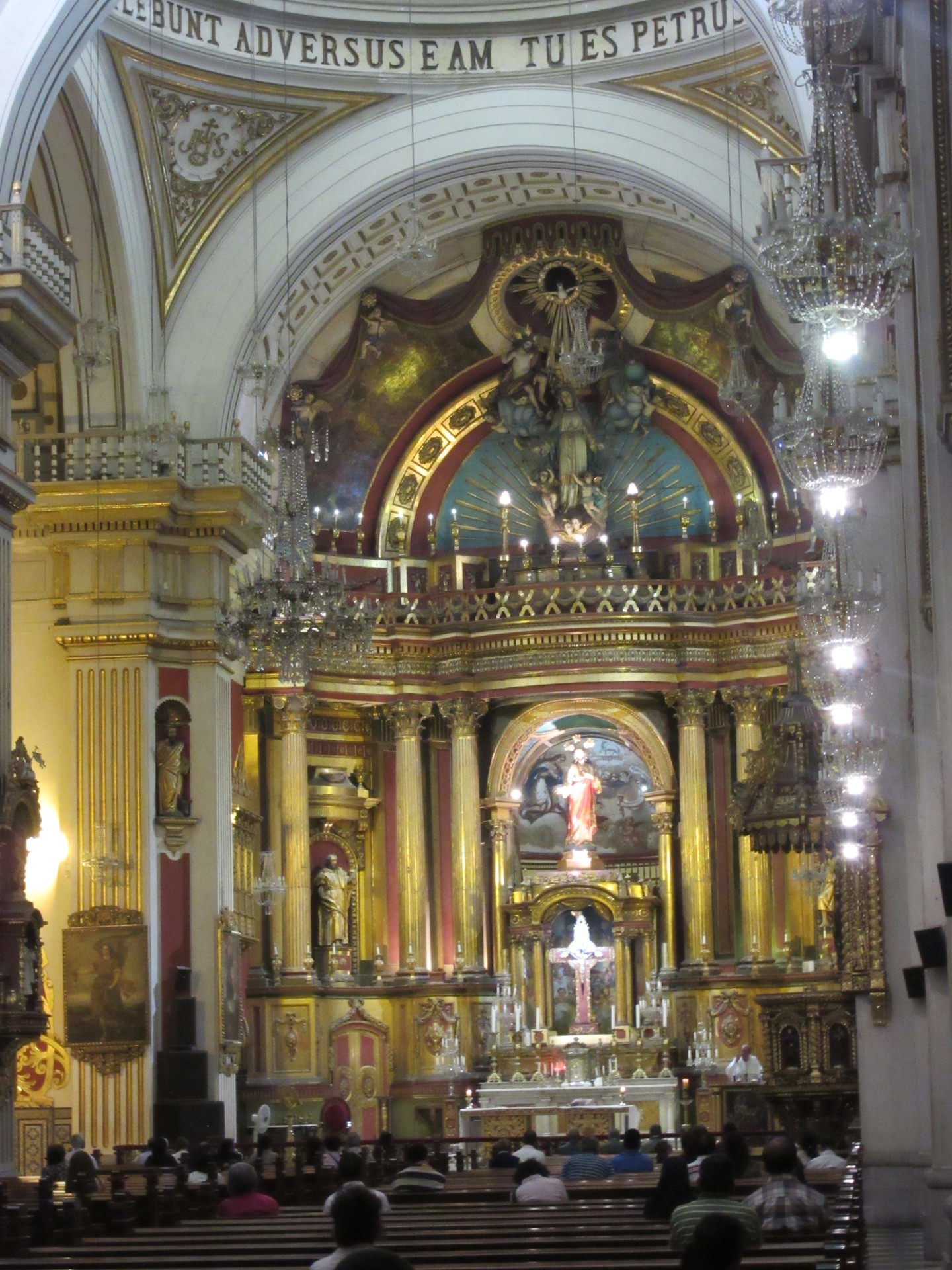
Its wooden gates are also a part of its beauty, mostly due to their "teatina" decorating the fassade. As I mentioned previously in my first publication about San Pedro of Lima, this was the only church of the colonial Lima which has 3 gates, and during those times only the cathedral could have this rank.
The view both of the inside and the outside is inspiring, especially when the night falls down and the fassades brighten up in the middle of the dark sky, giving the church the sense of mystery that the city of Lima keeps for each of us.
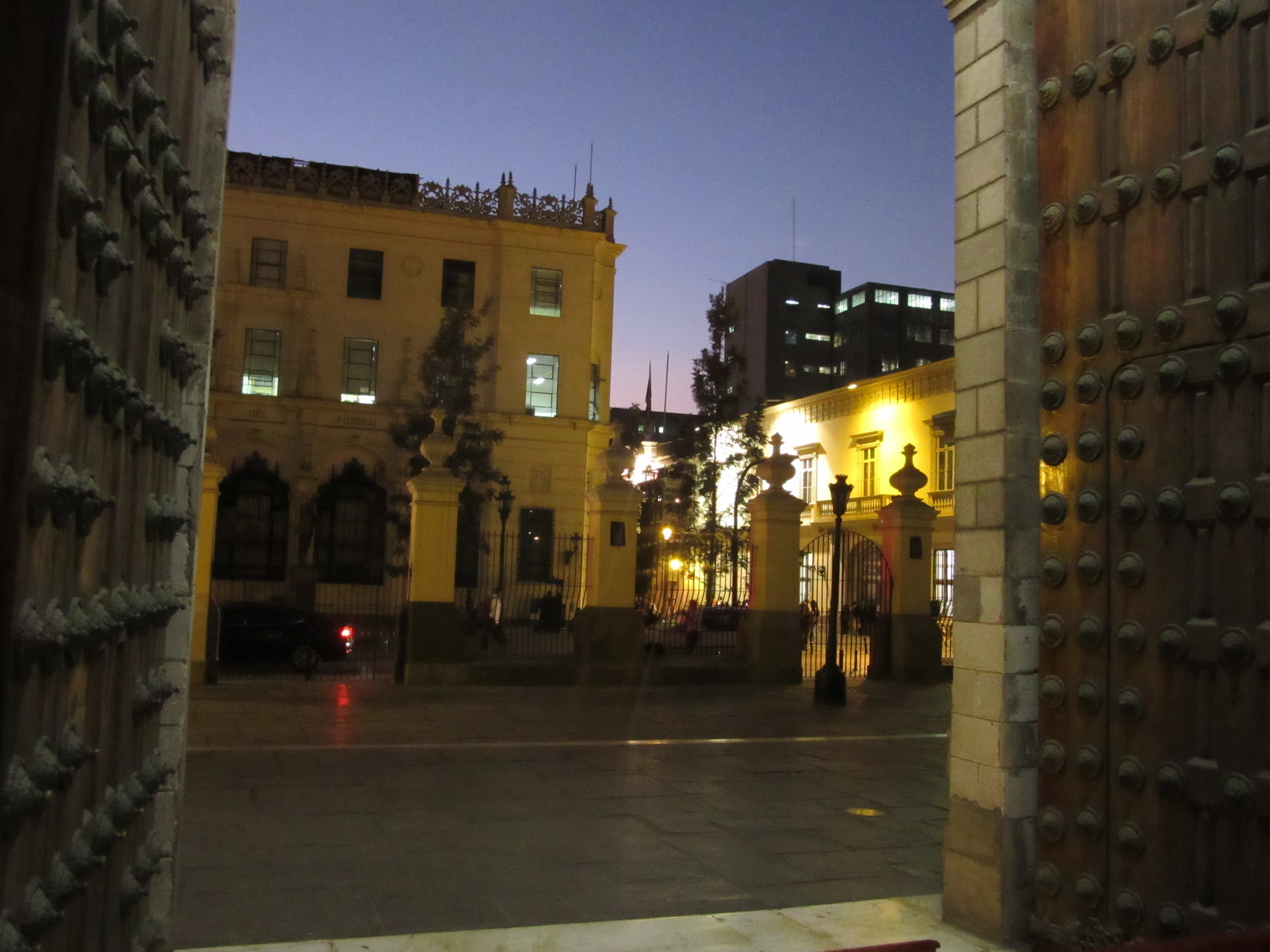
Each of its side alterpieces is finely decorated and also has an historical outline of itself. I remember that one of my friends, who studied Art History, once lent me a book beloning to her grandfather which had more than 100 pages uniquely about the church of San Pedro. The art of this church is wider than its investigations.
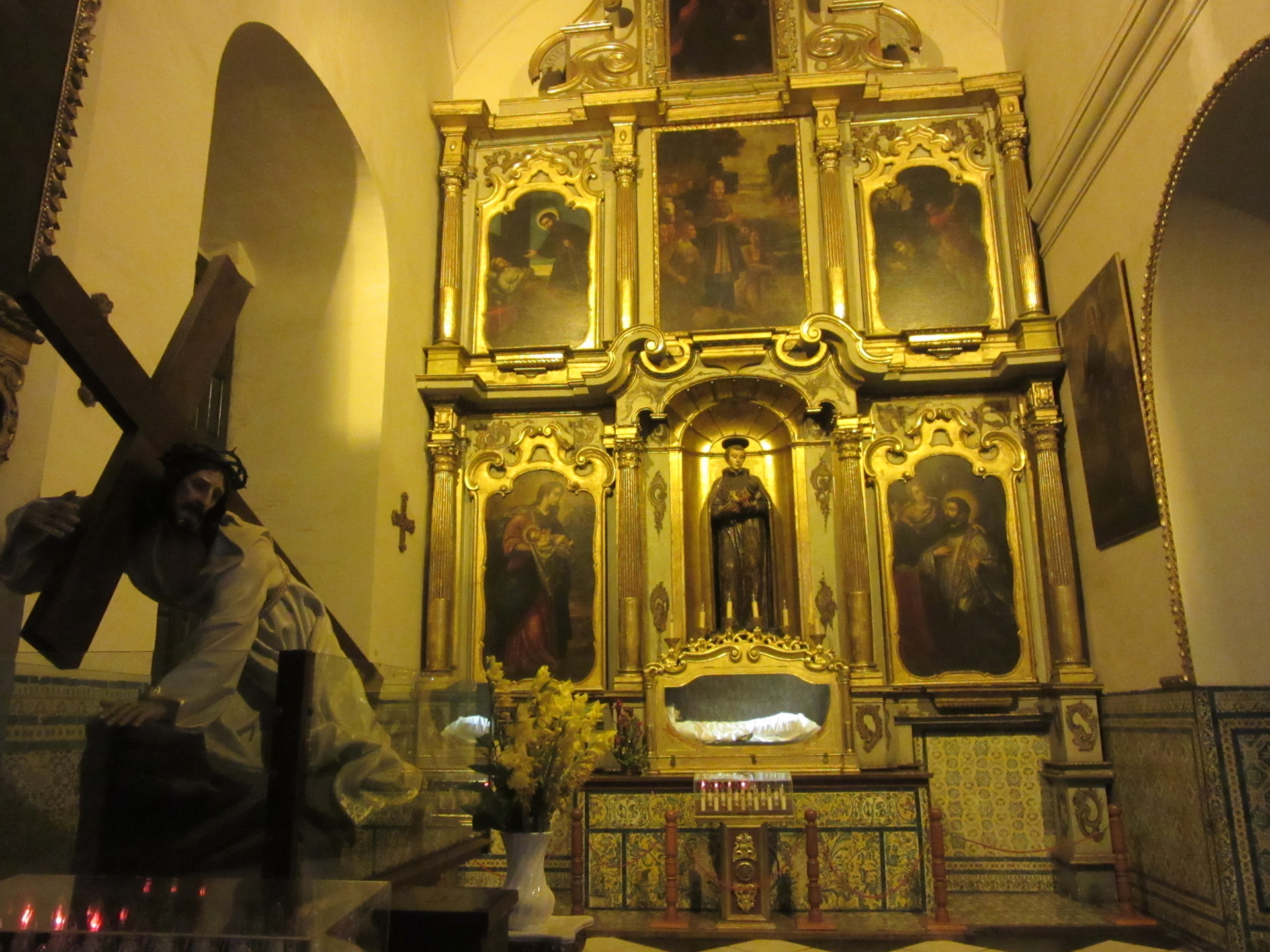
Placa del recuerdo (the memory plaque)
Not only can religious information be found, but also information related to the history of Perú as far as the Chilean war is concerned, which took place in the XIX century and is also knows as the Pacific War. Perú lost this war and it San Pedro square there's a commemorative plaque showing the faith of the fathers of the Society of Jesus in order to welcome the shaman from the Andes. Do you know who he is? Nobody else than Andres Avelino Caceres.

To get to Lima city centre there's more than one possibility. I suggest you take the underground, line C or A, if you're coming from the north.
As we have seen, the church of San Pedro is one of the most interesting ones jewels existing in the historical centre of Lima. It's a free-visit place where you must drop in while visiting the city of the kings. If you were to get married one day, make sure to do as much as possible to get married in this church as it's one of the most demanded ones in Lima.
Thank you very much for reading my report and we'll see you soon next time!
Photo gallery
Content available in other languages
- Español: Belleza de pan y oro
- Italiano: Bellezza del pane e dell'oro
- Français: Beauté de pain et d'or
Colonial Lima's most beautiful church
Hello everyone!
I hope that you're all very well.
Today we are continuing with the tour of churches from the centre of my town of Lima. I want to talk to you about one of the most beautiful churches in Lima located on Ucayali street: the Church of San Pedro. Outside, it looks modest in its style, but once you go inside you will see the great coffered ceiling and all of the beauty it holds for your eyes.
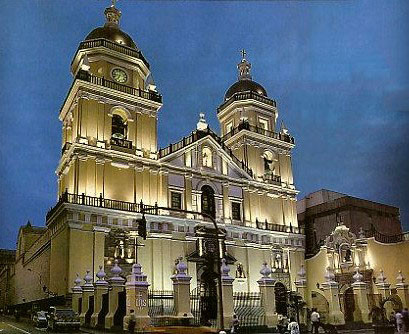
This church belongs to the Jesuits and is the only church in Lima, after the Cathedral, that was built according to the Christian Latin Cross.
Now that I mention it, this church is one of my favourites, simply due to that there are so many works of art on the walls and Baroque-style centre-pieces and coffered ceilings. Each chapel inside holds the image of a different Saint, with the most visited virgin called The Virgin O.
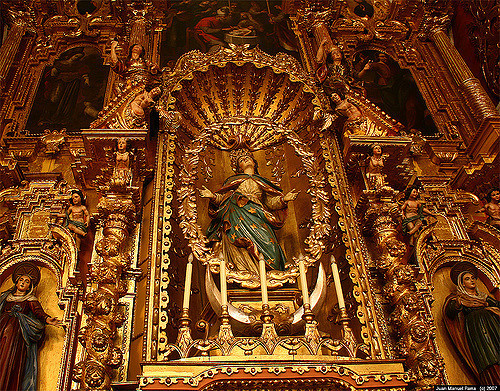
Nowadays, the San Pedro Church is not a museum, but it has all the tools to become one as, like its neighbours such as Santo Domingo and San Francisco, the San Pedro Church has a deliciously rich collection of art and rooms such as the vestry, the ante-vestry, the chapter-house, among others.
I will tell you another thing, to be married in this church is a true luxury, so much so that the engaged pair must join a huge long waiting list in order to be able to reserve a room. They have the religious acceptance ceremony next to gold-leaf centre-pieces, sculptures and paintings that decorate one of the most powerful churches of colonial Peru.
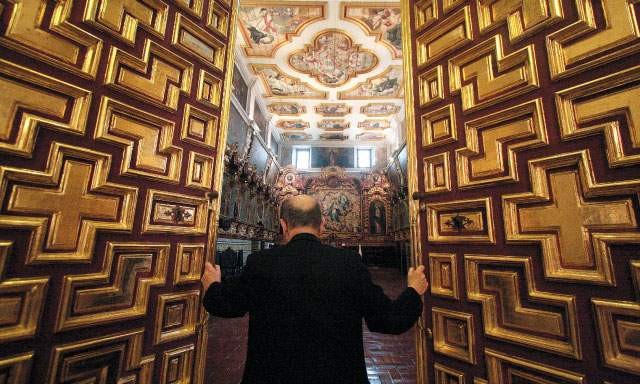
The church of San Pedro has an exterior latticed courtyard, and there are hours in the mornings during which you can find the doors open so that you can view all of the art inside. Furthermore, the church is beautifully lit up at nighttime, next to the old National Library of Peru and a few steps away from two other interesting monuments: the beautiful balconies of Torre y Tagle, and the Aspillaga house, the first of which is considered one of the the best balconies in all of Lima, and it dates back to the colonial period.
During my time as a student at San Marcos, I had to visit more than 100 monuments in the centre of Lima and I can tell you without a doubt, that the San Pedro church is in my top 10! As well as being free entry! I really hope that this church soon becomes a museum so that tourist Lima can continue to grow as it has done since the start of the 90s. The historic centre of Lima is a UNESCO World Heritage Site, so you cannot miss an opportunity to discover Lima. As the people of Lima say, in reality there is so much to see, so much to visit and even so many places to stay for hours and not leave, just like this beautiful church of San Pedro.
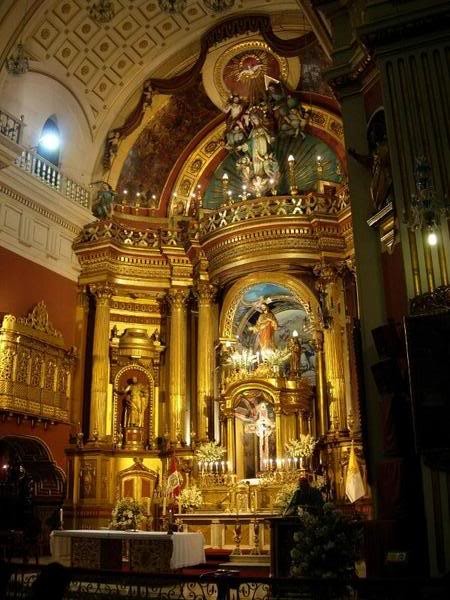
As part of the history I must tell you that the Jesuit order, who were founded by San Ignacio de Loyola and wear the colour black, were one of the religious orders that were quite tied to education, so much so that they created different colleges and internships in the city. For example, the Jesuit centre in the city which now is the San Marcos mansion, used to exist but now is a cultural centre.
On the main façade of the church you can find the emblem of the religious order on top of the main part of the front door. The main colours on the front of the church are yellows, as well as brown balconies and a few touches of white.
Yellow is one of the colours that represent Lima, and it is something with which, one can discuss in depth, as there are many shades. I will tell you one of them now: it is said, for example, that the colour yellow comes from a flower that only grows within the mountains of Lima. It is known as the flower of Amancaes, where they even have a festival over a couple of days that all Limans celebrate. Another reason why it is said that Lima has the colour yellow on its buildings is simply due to looking a the sky for months at a time. Look at the sky when you visit! You will see that it is almost always grey, but don't worry, it never rains in Lima! . At the most, a few tiny drops will fall, which we Limans call "llovizna": Lima is known as the City of the Donkey Belly due to its grey sky

Some people dislike the humidity of Lima, but as I have lived here all my live, I am really more accustomed to it than having bright sunshine during the summer season. If you come to Lima during December to March, that's when most Limans go to the beach every weekend, Lima is a Capital of South America that has access to the Pacific Ocean, we are very lucky! . We have a hundred beaches where you can get a tan and relax whilst also getting to know the history of the port of Callao, and most of all where to can eat well - you can eat Peruvian ceviche! And much more.
Another history that I told you already when I wrote about the history of the Cathedral of Lima is that here, in one of the towers you will find the oldest bell in my city that belongs to the Cathedral, known as "La Abuelita". Lima has so many churches and bells that it is considered both a grand religious center, whilst also being an important colonial city during the colonial period.
The San Pedro Church dates back to the year 1569, it is said that it was one of the last religious orders to arrive in Peru, considering that Lima was founded in 1535 on the 18th of January. Not many years later, approximately 34 years after the establishment of Lima, however the Jesuit order and the San Pedro Church quickly transformed itself into a strong rival to the other religious orders such as the Dominicans. Franciscans, Mercedarians, among others.
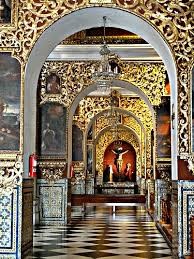
It could be said that San Pedro is one of the churches in the centre of Lima that denies to change its architectural style, compared ot the Cathedral for example, where you can find various different styles, so much so that you could say it is eclectic. Another thing I would like to share with you is the original name of the church. It was not always San Pedro, but San Pablo. Why is this? It is due to one of the Jesuits who was expelled from one of the colonies in Spain in the 18th century because of the power he was starting to have, so therefore the kings decided to expel him to the Jesuits of Lima and to the Virreynato of Peru, and it was then that the name changed to San Pedro.
A rebellious church
Another thing I love about this church is that it rebelled against its history. It is the only church, after the Cathedral of Lima, that has three doors, and by the religious laws, only the Cathedral is allowed to have three doors in the city, and this created a long feud! In the colonial period, such was the case that it even came to the Pope’s attention. How did they resolve it? The answer is simple, it was decided to keep the two lateral doors closed and just leave the largest one open in the centre.

I have already mentioned that Lima is full of balconies and guess what? Inside the San Pedro church there is a small balcony bathed in gold leaves that stands out s if it were in an exclusive religious gallery. It is said for example, that the Viceroys and other notable people can hear the preacher, unable to be seen! Lima is a city with so many mysteries and this balcony is a clear example.
When you enter the San Pedro Church, I recommend that you go through the back nave, to the left or the right in order to start your tour, and then you will see the pillars bathed in gold leaves and their baby-blue Sevillian bases imported from Spain, it is just something that every single visitor should see.
When I visited the Church of San Pedro and saw its altar with its neo-classical style, I kept asking myself what would have happened if the earthquakes and the different art styles had not changed it, what would have happened if the Baroque-style altar was still in tact and all of the works of art. If it is still marvelous today, I don't want to imagine the beauty it had in those times. Some fortunate Liman people who lived could have seen the true art, and for this reason San Pedro is one of the most visited churches by art connoisseurs, as well because it has been restored in an exemplary manner with current techniques to try and continue maintaining its architectural beauty.
Most of the centre-pieces are made from wood and covered with gold leaves, however I'm telling you, that one of my favourites is one that does not fit with this style, is it completely gloomy in honour of San Ignacio de Loyola, who founded the religious order of the Jesuits in Europe. When you go past this altar, you will find yourself really close to an altar, one which seems minuscule in front of a huge impressive piece of art.
When you enter the church and if you come across a priest in his chapel, speak with him in order to be able to enter into his room, he can show you easily that inside there are amazing collections of paintings of different saints and coffered ceilings that are particular to Lima. Today, thanks to the help of different charity foundations they are doing everything possible to continue giving maintenance to each and every one of the chapels, this can take years. Every time that I entered I would always see a white veil over some of the chapels in order to allow them to work meticulously and with an admirable patience.
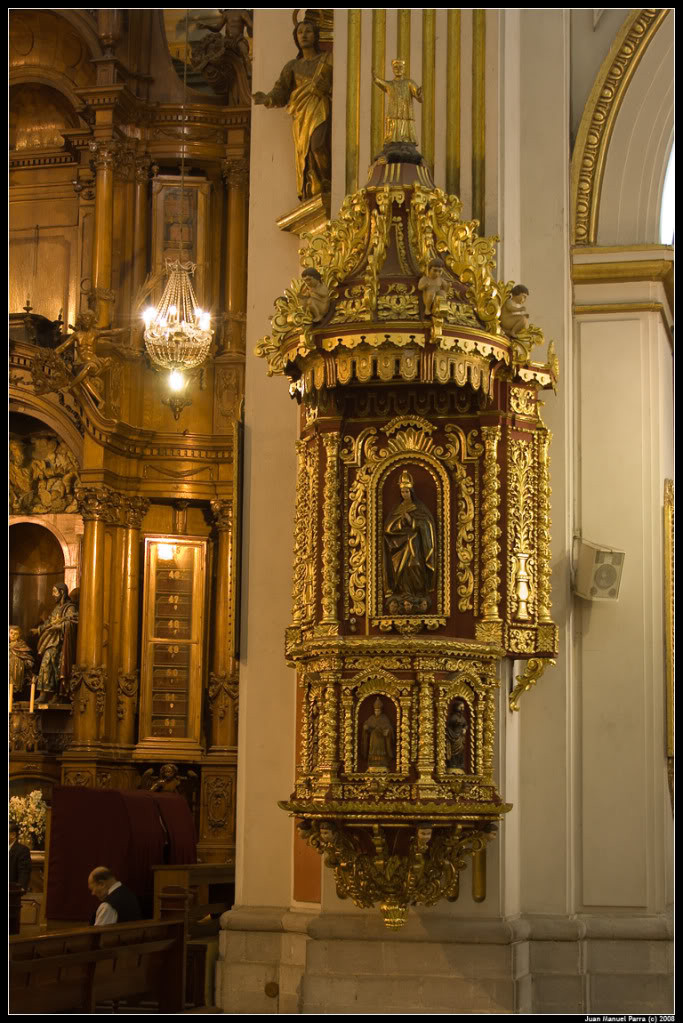
I hope that I have encouraged you to visit one of the most beautiful churches in my town soon, a town of churches, art and a lot of history just waiting to be discovered.
Thank you for reading my article! Keep discovering every pathway of my beautiful, brilliant and magical city.
Photo gallery
Content available in other languages
- Español: La Iglesia más bella de Lima Colonial
- Italiano: La Chiesa più bella di Lima
Rate and comment about this place!
Do you know San Pedro Church? Share your opinion about this place.





























